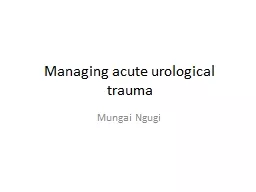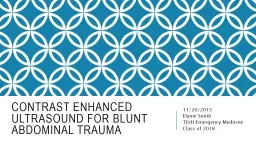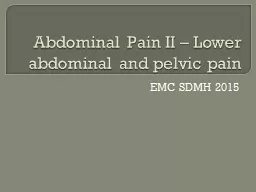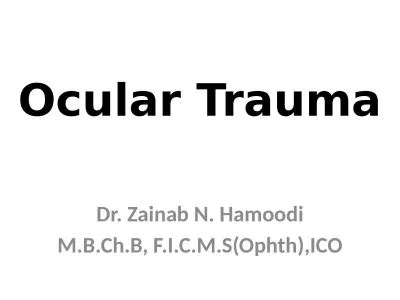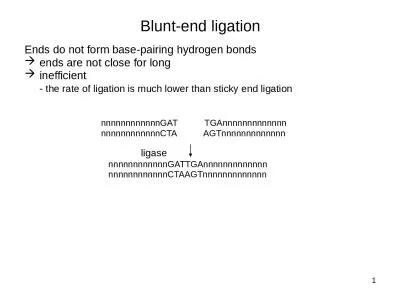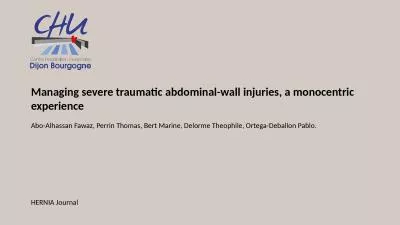PPT-Trauma– Blunt Abdominal Trauma
Author : conchita-marotz | Published Date : 2015-10-29
Douglas M Maurer DO MPH Learning Objectives Recognize and respond appropriately to a patient with hemorrhagic shock Assess via bedside methods the source of hemorrhage
Presentation Embed Code
Download Presentation
Download Presentation The PPT/PDF document "Trauma– Blunt Abdominal Trauma" is the property of its rightful owner. Permission is granted to download and print the materials on this website for personal, non-commercial use only, and to display it on your personal computer provided you do not modify the materials and that you retain all copyright notices contained in the materials. By downloading content from our website, you accept the terms of this agreement.
Trauma– Blunt Abdominal Trauma: Transcript
Download Rules Of Document
"Trauma– Blunt Abdominal Trauma"The content belongs to its owner. You may download and print it for personal use, without modification, and keep all copyright notices. By downloading, you agree to these terms.
Related Documents




